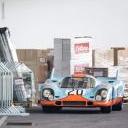Saab 9-3 2013 - La Mai Nata (Foto e Storia Ufficiali)
-
Contenuti simili
-
- 35 risposte
- 3990 visite
-
- 110 risposte
- 72078 visite
-
NEVS "SUV EV" (Spy) 1 2
Pubblicato da Beckervdo,
- saab
- national electric vehicle sweden
- (e 3 altri in più)
- 13 risposte
- 2751 visite
-
-
-





.thumb.jpg.902d2a4f20a129e92b6f6920407b81bd.jpg)









.thumb.jpg.46228d717c405acd43b45b79fddce6a4.jpg)






Messaggi Raccomandati:
Crea un account o accedi per lasciare un commento
Devi essere iscritto per commentare e visualizzare le sezioni protette!
Crea un account
Iscriviti nella nostra community. È facile!
Registra un nuovo accountAccedi
Sei già registrato? Accedi qui.
Accedi Ora